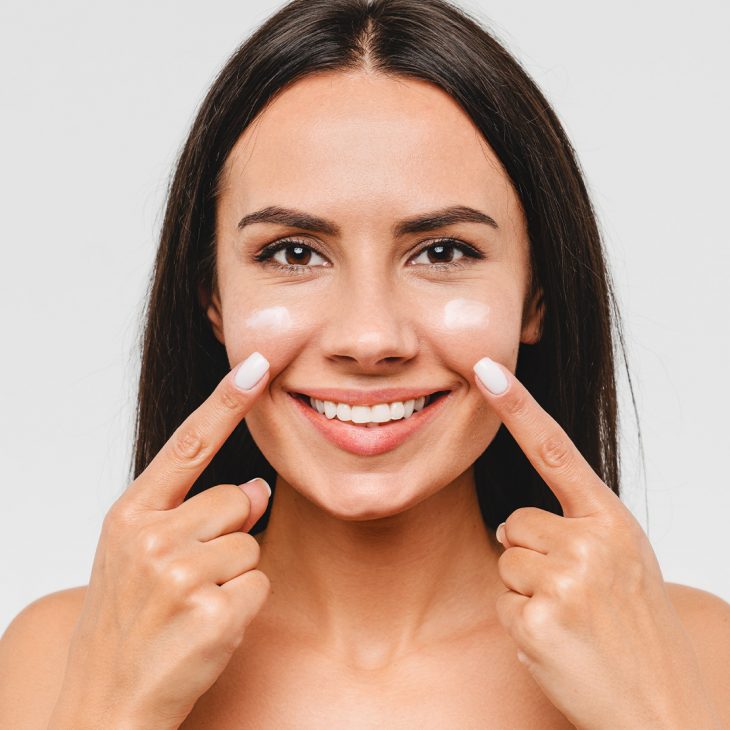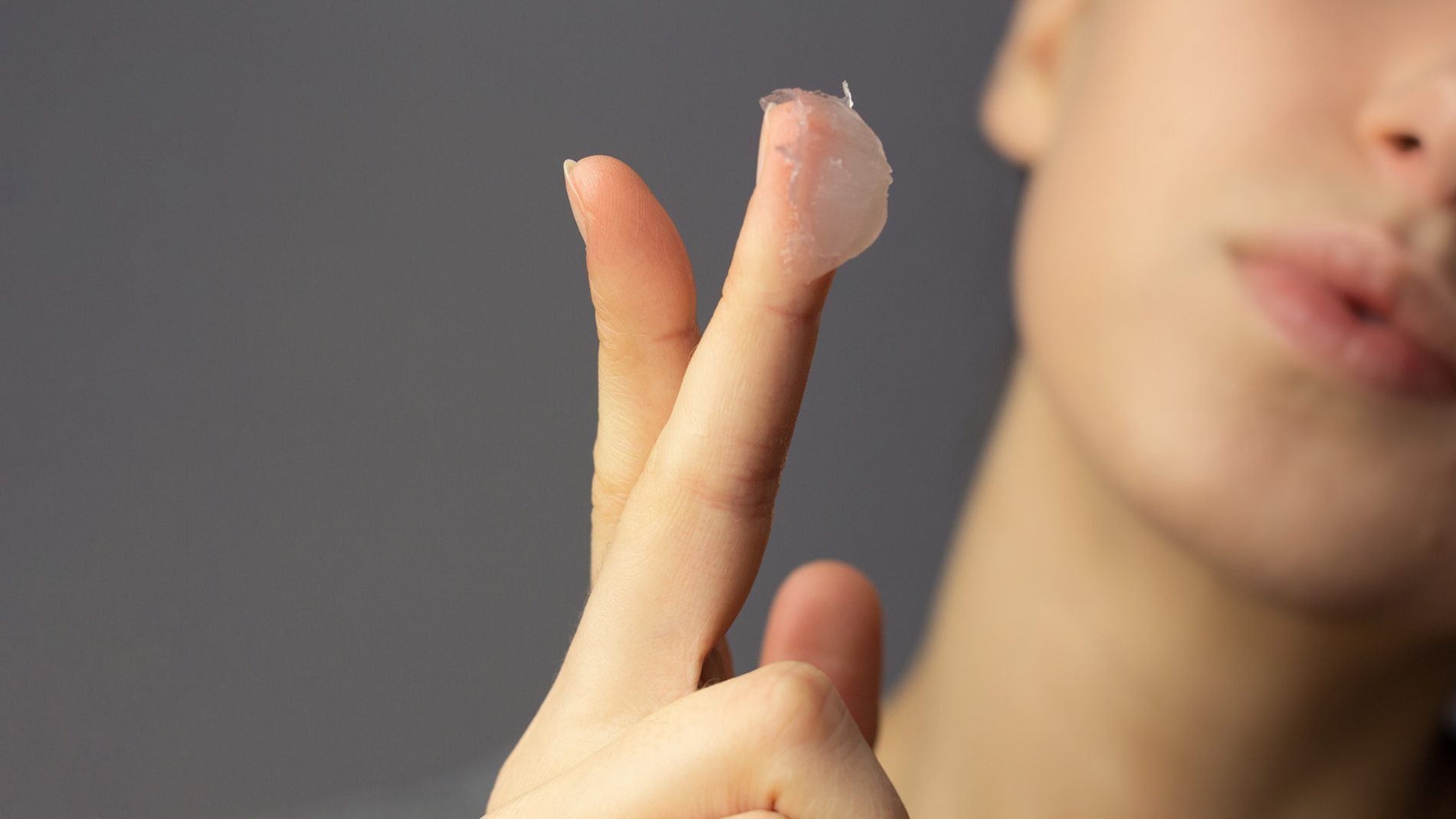If you spend time exploring the skincare and beauty side of social media, chances are you’ve come across the term “slugging” by now. This emerging skincare trend has taken the industry by storm, with influencers and even dermatologists singing its praises. But what exactly is slugging skincare, and should you give it a try? In this blog, we will delve into the world of slugging, exploring its benefits and whether or not you should jump on the bandwagon. So, sit tight and join us as we unravel the secrets of slugging skincare.
What Is Slugging In Skincare?
Slugging skin is a trendy method where you slather petroleum jelly (as Aquaphor or Vaseline) on your face as the last step of your evening skincare routine. This leaves your face feeling slimy, like slug mucus—hence the name.
Skincare experts on social media claim that it gives them a lovely glow. But how does it work? Well, petroleum jelly is a simple and thick ointment that creates a protective layer on your skin’s surface. This layer helps to seal in moisture and prevents your skin from drying out, resulting in a gorgeous glow.

Benefits Of Slugging
The benefits of slugging face, or applying petroleum jelly as the final step in your skincare routine, can be summarized as follows:
#1 Moisturizes
By creating a protective barrier, slugging helps to lock in moisture and keep your skin hydrated. This retained hydration can penetrate the outer layer of your skin—making it thicker, more flexible, and more elastic.

#2 Protects
The barrier formed by slugging not only keeps water from evaporating but also acts as a shield against external irritants. It helps prevent harmful substances from entering your skin, reducing the risk of irritation or immune reactions.

#3 Repairs Damage
If your skin is dehydrated or damaged, slugging can help in preventing further water loss and allow the skin to heal itself. The protective layer helps create an optimal environment for skin repair and regeneration.

How To Do Slugging?
Now that you understand the slugging skin meaning, let’s take a closer look at its process:
Step 1: Cleanse and Prep
Start by using a gentle cleanser or face wash to remove any dirt, grime, or makeup residue that may have accumulated throughout the day. Gently pat your skin dry with a clean towel, ensuring it’s free from excess moisture.

Step 2: Moisturize, Moisturize, Moisturize
Hydration is the key to unlocking the magic of slugging. Apply your favourite moisturizer that suits your skin type and concerns. Look for moisturizers rich in humectants like hyaluronic acid or glycerin, as they help attract and retain moisture within the skin. Allow the moisturizer to fully absorb before moving on to the next step.

Step 3: Embrace the Slugging Power
Now comes the star of the show: petroleum jelly (cue the “oohs” and “ahhs”). Take a small amount of petroleum jelly on your fingertips and gently massage it all over your face, focusing on the areas prone to dryness. The goal is to create a thin, even layer that seals in all the goodness from your previous skincare steps.

Step 4: Beauty Sleep Time
Once your face is all slugged up, it’s time to hit the pillow and let the magic happen while you snooze away. The occlusive barrier created by the petroleum jelly will help lock in the moisture, allowing your skin to soak up the hydration throughout the night. Wake up to plump, dewy skin that radiates a healthy glow!

Step 5: Rise and Shine, Beautiful
In the morning, gently cleanse your face to remove the remaining jelly residue. Follow it up with your regular skincare routine, including a moisturizer and sunscreen. You’ll be amazed at how soft and supple your skin feels, ready to take on the day with confidence!

Who Shouldn’t Try Slugging?
Although slugging face has a plethora of benefits, it might not be suitable for everyone. You shouldn’t try slugging if you have:
#1 Oily Skin
Slugging may not be the best fit for those with naturally oily or acne-prone skin. The heavy occlusive nature of petroleum jelly can potentially clog pores and lead to breakouts.

#2 Acne-Prone Skin
If you’re dealing with active acne or have a history of frequent breakouts, it’s wise to steer clear of slugging. The occlusive barrier created by petroleum jelly can trap bacteria and exacerbate existing acne.

#3 Allergic Reactions
If you have a known allergy to petroleum-based products or if you’ve experienced adverse reactions in the past, it’s safer to skip slugging. Opt for alternative moisturizing methods that suit your skin better.

Remember, everyone’s skin is unique, so it’s essential to listen to your skin’s needs and consult with a dermatologist if you’re unsure about incorporating slugging into your skincare routine. Play it safe and maintain a healthy, balanced approach to achieve your skin goals!
Wrapping Up
Slugging skincare offers a game-changing approach to achieving hydrated, dewy skin. By sealing in moisture with a thin layer of petroleum jelly, you can wake up to a complexion that feels nourished and looks radiant. So, why not give slugging a go? Embrace the power of this nighttime ritual and unlock the secret to a skincare routine that leaves you glowing from within.










